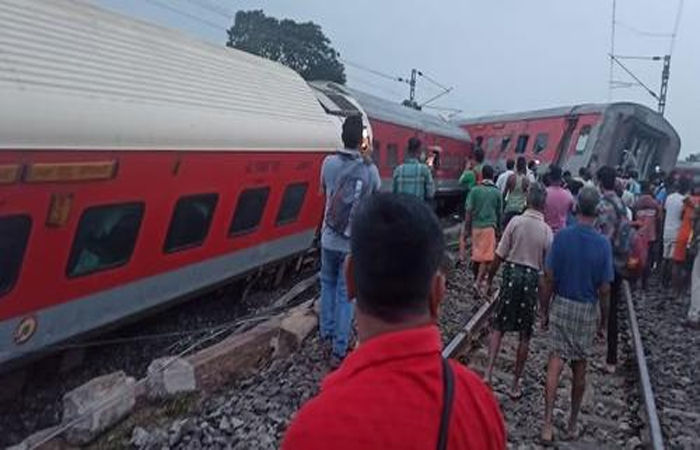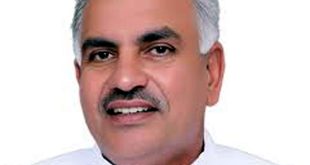
Train Accident: Train accidents happen frequently in the country. The tears of the family members of those who lost their lives in the train accident in Gonda, UP on July 18 had not yet dried when another train accident happened today. The accident happened in Chakradharpur near Tatanagar in Jharkhand on Tuesday morning. 18 coaches of the Howrah-CSMT Mail going from Howrah to Mumbai derailed. Two passengers died in the accident, while 50 people were injured. Two days ago, a goods train had derailed on the same route. The Howrah-CSMT Mail collided with a coach of this goods train, while six coaches of the Chandigarh-Dibrugarh Express derailed in Gonda. Two people died in this accident while more than 30 people were injured. In the last 14 months, four major rail accidents have taken place in the country, in which more than 320 passengers have lost their lives.
Many questions still remain unanswered about the Balasore train accident that took place on June 2 last year. Three trains collided head-on in Balasore. In that accident, the Coromandel Express collided with a large freight train and then a superfast express coming from the opposite direction. Nearly 300 people died in this accident. Initial reports indicate that the accident was the result of signal failure but it has once again raised new concerns about railway safety in India.
Network of more than one lakh km in the country
India's vast railway system is the fourth largest in the world. It carries and transports about two and a half lakh passengers daily on a nationwide track network of over one lakh kilometres. According to the report, according to Railway Minister Ashwini Vaishnaw, about 5,200 kilometres of new tracks were built in the year 2022. The minister said that 8,000 kilometres of track is being upgraded every year. Vaishnaw said that most of the tracks are being upgraded to accommodate trains running at speeds of up to 100 kmph. A large section was being increased for speeds of up to 130 km/h and a significant section was being upgraded. Being prepared for higher speeds of up to 160 km/h.
There are many reasons behind train derailment
This is part of the government's plan to run high-speed trains across the country. A separate high-speed line is being built between the country's financial capital Mumbai and the city of Ahmedabad. A former chairman of the Railway Board said, “Train derailment has become a problem for the railways. A train can derail due to many reasons. The track can be poorly maintained, the coaches can be faulty and the driving can be faulty.”
70 percent of accidents are caused by train derailment
A government railway safety report for the year 2019-20 found that derailments were responsible for 70 per cent of railway accidents, up from 68 per cent the previous year. This was followed by train fires and collisions, which accounted for 14 and 8 per cent of the total accidents, respectively. The report listed 40 derailment incidents involving 33 passenger trains and seven freight trains during the year 2019-20. Of these, 17 derailments were caused by track defects. According to the report, only 9 derailment incidents were caused by defects in the train, engine, coach, wagon.
Regular track maintenance is essential
Metal railway tracks expand in the summer months and contract in the winter due to temperature fluctuations. They require regular maintenance, which includes tightening loose tracks, replacing sleepers, and lubricating and adjusting switches. The track is thus inspected by pedals, trolleys, locomotives, and other vehicles. Indian Railways recommends that track-recording cars be carefully assessed at least once every three months on tracks designed to maintain speeds of 110 km/h to 130 km/h.
Preservation work in progress
There has been a lot of discussion about installing anti-collision devices (shields) in Indian trains. Kavach is an automatic train protection system developed by RDSO for Indian Railways. Railways started working on this system in the year 2012. This technology has been successfully used only last year. However, this technology is not available on all railway routes in the country. This system is currently being deployed only on two major routes between Delhi and Kolkata and between Delhi and Mumbai. Work is underway to implement this technology on all railway tracks.
What is shielding and how does it work?
According to the railways, the shield technology works to prevent head-on collisions between trains. In this technology, the train stops automatically when the signal is jumped. Shielded systems use high frequency radio communication. This system works in three modes. Such as head-on collision, rear-end collision and signal related dangers. In case of brake failure, the shield controls the speed of the train by applying automatic brakes. The on-board display of the signal aspect alerts the pilot when visibility is low. Once the system is activated, trains stop within a range of 5 km. Until it is fully implemented, trains will run at God's mercy.
 look news india
look news india
